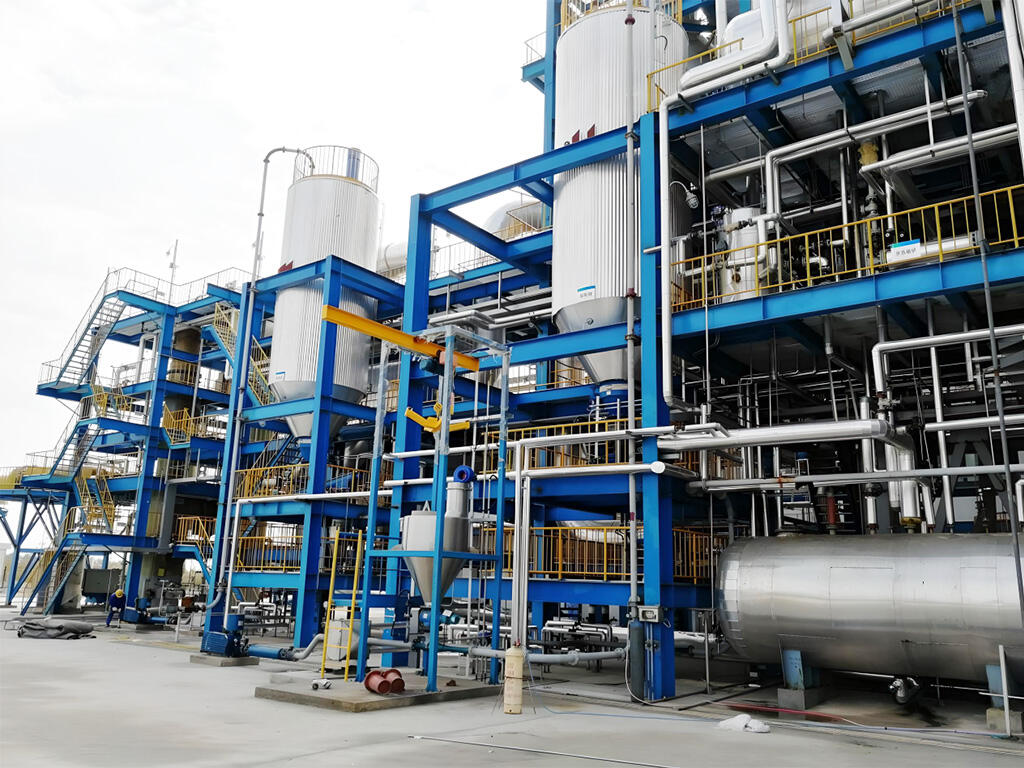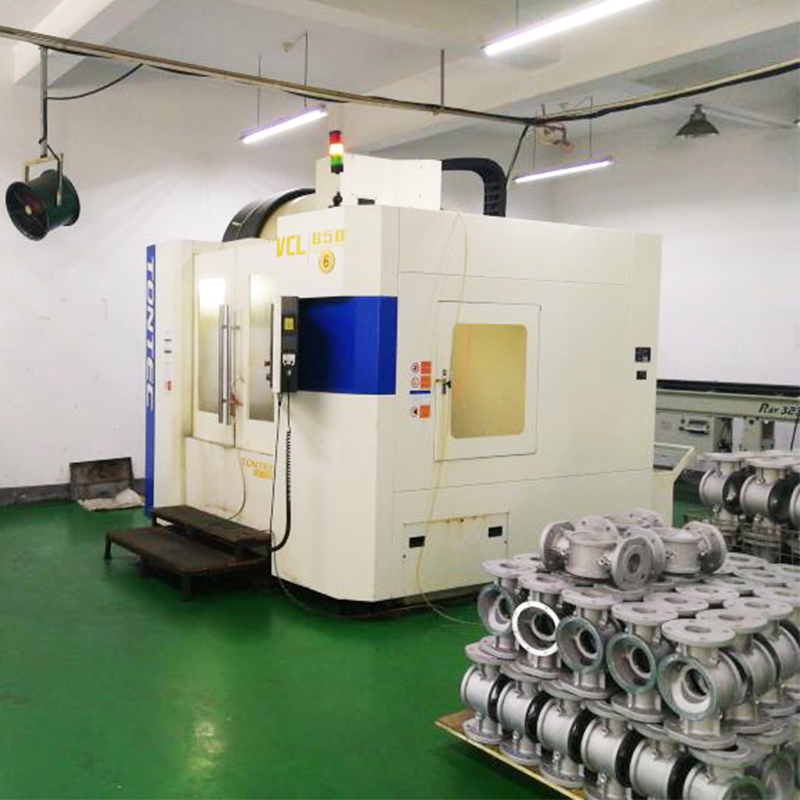At forstå, hvordan brænderteknologi former keramikkvaliteten
Præcision i temperaturregulering og termisk stabilitet
At få temperaturreguleringen helt rigtig under brænding af keramik er meget vigtigt, fordi hvert enkelt stykke kræver bestemte temperaturniveauer for at opnå de vigtige egenskaber som styrke og holdbarhed. De nyere brændersystemer, der er tilgængelige i dag, hjælper virkelig producenter med at justere temperaturerne præcist, hvilket gør processen meget mere termisk stabil. Når dette sker, undgår man almindelige problemer som forvrængning eller revner, noget der helt sikkert forhindrer keramikstykker i at gå i stykker over tid. Forskning viser faktisk, at ved at fastholde stabile temperaturer gennem hele produktionen forbedres de mekaniske egenskaber ved materialerne. Forskellige laboratorietests og brugerapporter har konsekvent fremhævet, hvordan bedre kontrol under brænding direkte resulterer i højere kvalitet af slutprodukterne i forskellige keramiktyper.
Ensartet varmefordeling for ensartede resultater
At opnå jævn varme gennem hele en keramikgenstand er vigtigt, fordi hver sektion kræver lignende behandling for at skabe noget ensartet i sidste ende. Brændersystemer designet med bedre luftcirkulation hjælper med at reducere de varme pletter og koldere områder inde i ovne, og dette gør en reel forskel i, hvor stærke og ensartede de færdige keramikker bliver. Brancheundersøgelser viser, at når ovne er udstyret med disse forbedrede brændersystemer, producerer de typisk omkring 30 % færre defekte varer sammenlignet med ældre modeller. Færre defekte emner betyder glade kunder og mindre spildt materiale over tid, så investering i korrekte opvarmning løsninger betaler sig for keramikproducenter, der ønsker at forbedre både kvalitetskontrol og resultatafregning.
Påvirkning af glasurhæftning og overfladebehandling
Valg af det rigtige brændersystem gør en reel forskel i forhold til, hvor godt glasur hæfter til keramiske overflader. Uden korrekt hæftning opstår problemer som flig, der skaller af eller bliver løs fra keramikken, hvilket bestemt påvirker den samlede kvalitet af de færdige produkter. Når temperaturen stiger og falder under brændingen, påvirker dette det endelige udseende af keramikstykket. Derfor er det så vigtigt at have brændere, der kan opretholde en stabil varme gennem hele processen for at opnå de ønskede glatte glasurresultater. Studier viser, at bedre hæfteevne fra god brænderteknologi faktisk gør keramiske produkter mere attraktive. Forbrugere, der køber keramik, vælger som udgangspunkt det, der ser bedst ud, og derfor er det afgørende for producenter at være opmærksomme på disse detaljer, hvis deres produkter skal skille sig ud i forretningsleddet.
Typer af keramikovn-brændere: Effektivitet og anvendelsesområder
Højeffektive industrielle gasbrændere
Industrielle gasbrændere, der leverer høj effektivitet, spiller en vigtig rolle i drift af keramikovne, fordi de kan opretholde stabil temperatur på meget høje niveauer uden at forbrænde overdreven mængde brændstof. Mange moderne modeller er udstyret med avanceret teknologi, der udnytter hver eneste dråbe brændstof optimalt, hvilket resulterer i reelle besparelser for fabrikker, der producerer keramik i stor skala. For enhver, der fremstiller keramik, hvor temperaturstabilitet er afgørende for produktkvaliteten, betyder disse brændere en kæmpe forskel. Det interessante er, hvordan disse systemer kan tilpasses forskellige typer brændstoffer. Nogle fungerer bedre med naturgas, mens andre håndterer propan eller endda biobrændstoffer. Dette giver fabrikschefer valgmuligheder, når de vurderer både omkostninger og miljøpåvirkning. Producenter sætter stor pris på denne fleksibilitet, da det giver dem mulighed at vælge brændstofkilder, der matcher deres budgetmæssige begrænsninger, mens de stadig kan overholde de stadig skærpede emissionsstandarder i branchen.
Oljebrændere med varmevekslere til energigenindvinding
Varmevekslere, der er monteret på oliefyr, har virkelig ændret måden, vi tænker på energigenanvendelse, især når det gælder de intense keramikbrændingsprocesser, der kører døgnet rundt. Disse systemer opsamler al den spildte varme og sætter den tilbage i spil, hvilket reducerer den samlede energiforbrug og samtidig sparer penge. For producenter, der ønsker at balancere mellem økonomi og grønne initiativer, giver denne type teknologi god mening. Desuden har de en længere levetid end ældre modeller og reducerer faktisk skadelige emissioner, hvilket er meget vigtigt i dag med al snakken om klimaforandringer. Ifølge nylige undersøgelser fra producentforeninger opnår virksomheder, der installerer disse varmegenvindingsystemer, typisk omkring 30 % lavere energiforbrug. Selvom installationen kræver en vis forudgående investering, finder de fleste virksomheder ud af, at langsigtede besparelser gør det værd at tage fejl, især når miljøreglerne fortsat bliver strammere inden for branchen.
Hybridsystemer til alsidige brændingsbehov
Hybridbrændere giver rigtig fleksibilitet i keramikproduktionen, når de kombinerer flere brændselkilder i én opsætning. Producenter finder dette virkelig hjælpsomt, når de er nødt til at ændre deres driftsform på grund af ændrede markedsforhold eller udbudsspændinger. Disse systemer giver dem mulighed for at finjustere brændprocessen, så de kan håndtere alle slags keramik, fra tallerkenesker til industrikomponenter, uden at kompromittere produktkvaliteten. Brancheeksperter fremhæver, at disse hybridopsætninger forbedrer ovnens ydeevne samtidig med, at de reducerer de irriterende produktionsstop. Muligheden for at skifte mellem forskellige brændemetoder gør disse systemer til uundværlige udstyr for moderne keramikfabrikker, der ønsker at forblive konkurrencedygtige i foranderlige markedsforhold.
Optimering af forbrænding for overlegne produktresultater
Balancering af brændstoff-til-luft-forhold for at reducere fejl
At få den rigtige blanding af brændstof og luft spiller en stor rolle i forbrændingsprocesser, hvis målet er at reducere sod og ubrændt brændstof, som påvirker produktkvaliteten. Når producenter får denne balance til at gå op, ender de med færre produkter med fejl – noget der virkelig betyder meget for virksomheder i brancher, hvor præcision er afgørende, tænk for eksempel keramikproduktion eller finmetalfabrikation. En anden fordel er renere forbrænding, hvilket betyder mindre forurening ud af skorstenene, så fabrikkerne kan overholde de stadig strammere miljøregler. Det understøttes også af data fra den virkelige verden. Tag producenter af keramiske fliser som eksempel – mange rapporterer, at de har halveret antallet af defekter efter at have finjusteret deres forbrændingssystemer. Denne type resultater viser, hvorfor det er så afgørende at få brændstof-luft-forholdet helt rigtigt – det handler ikke kun om at spare penge, men er faktisk afgørende for at sikre konstant produktkvalitet og leve op til kundernes forventninger.
Minimering af termisk chok og oxidationsproblemer
Termisk stød forbliver et stort problem under brændingsprocessen for keramik, hvilket forårsager revner og andre fejl, der ødelægger ellers gode emner. Når forbrændingen ikke er ordentligt under kontrol, bliver dette termiske stød værre, så at få brænderne til at fungere korrekt gør hele forskellen. Producenter, der tager termiske stødspørgsmål op, beskytter deres produkter mod skader og sparer samtidig penge på brækkede varer. Keramikproducenter, der lægger mærke til disse temperatursvingninger, får som regel færre afvisninger og bedre resultater, ifølge mange fabrikschefer. God forbrændingskontrol handler ikke kun om at holde tingene i gang jævnt, faktisk er det en af de vigtigste faktorer, der påvirker både produktkvaliteten og hvor længe keramikvarerne vil vare, før de skal udskiftes.
Vedligeholdelse og bæredygtighed af brænderens ydeevne
Rutinemæssig rengøring for at forhindre ujævn afbrænding
At holde brændere rene gennem regelmæssig vedligeholdelse gør hele forskellen, når det kommer til de ensartede forbrændingsforhold, der er nødvendige for god produktkvalitet. Når virksomheder springer deres rengøringsrutiner over, opbygges der affald i brænderne over tid. Hvad sker der så? Forbrændingen bliver ujævn, og dette viser sig i de færdige produkter som uregelmæssigheder, som kunder helt sikkert lægger mærke til. For virksomheder, der fremstiller varer, som afhænger af præcis varmekontrol, kan disse variationer virkelig skade både omdømmet og bundlinjen. Gode vedligeholdelsesplaner skal matche, hvor hårdt udstyret faktisk arbejder fra dag til dag. Erfaring fra industrien fortæller os, at at holde fast ved en korrekt rengøringsplan holder alt kørende jævnt og forlænger levetiden for dyre brændersystemer. De fleste anlægschefer kender fra bitter erfaring, at at skære over i rengøring først fører til større problemer længere nede ad vejen, så konsekvent opmærksomhed på brændervedligeholdelse forbliver en ufravigelig del af enhver alvorlig produktionsvirksomhed.
Opgradering af komponenter for langsigtet pålidelighed
At opgradere til bedre brænderdele giver god forretningsfornuft, hvis virksomheder ønsker at holde deres drift i gang uden afbrydelser og reducere vedligeholdelsesrelateret nedetid. Når virksomheder installerer moderne komponenter, opnås færre driftsstop samt forbedret effektivitet til krævende anvendelser såsom oliebrændere eller industrielle gassystemer. Set i et større perspektiv går fokus på pålidelig udstyr ud over blot at holde tingene i korrekt funktion – det hjælper faktisk med at skabe mere forudsigelige produktionsplaner. Kunder har tendens til at stole på leverandører, som konsekvent leverer inden for aftalte frister, fordi de ved, hvad de kan forvente. Brancheeksperter fremhæver regelmæssigt, at investering i nyere brænderteknologi betaler sig over tid ved at reducere omkostninger og gøre forbrændingsprocesser mere effektive. Virksomheder, som anvender denne fremadrettede tilgang, oplever typisk konkrete forbedringer både i form af omkostningsbesparelser og miljøpåvirkning, hvilket i stigende grad betyder noget i dagens marked.
Ofte stillede spørgsmål
Hvorfor er temperaturkontrol afgørende i keramikbrænding?
Temperaturkontrol er afgørende, fordi den sikrer, at keramik opnår ønskede egenskaber som hårdhed og holdbarhed. Korrekt kontrol hjælper med at forhindre problemer såsom krumning og revner, som kan kompromittere produktkvaliteten.
Hvordan påvirker brænderteknologi glasurhæftningen på keramik?
Effektiv brænderteknologi opretholder stabile temperaturer, hvilket hjælper med at forbedre glasurhæftningen, forhindre fligning eller skrælling og forbedre det æstetiske udtryk af keramikprodukterne.
Hvilken rolle spiller hybridbrænderanlæg i keramikproduktion?
Hybridbrænderanlæg tilbyder alsidighed ved at tillade kombination af forskellige brændselstyper, hvilket gør det muligt for producenter at tilpasse sig markedets krav og optimere deres processer uden at gå på kompromis med produktkvaliteten.
Hvordan kan vedligeholdelse påvirke brænderens ydeevne og produktkvalitet?
Almindelig vedligeholdelse, især rutinemæssig rengøring, forhindrer opbygning af rester i brændere. Dette hjælper med at opretholde konstante afbrændingsforhold, som er afgørende for produktkvaliteten, og forlænger udstyrets levetid.
Hvilke fordele bringer oliebrændere med varmevekslere med sig til afbrænding af keramik?
Oliebrændere med varmevekslere udnytter spildvarmen til at øge energieffektiviteten, reducere driftsomkostninger og bidrage til bæredygtighedsmål ved at sænke emissionerne i intensivt anvendte afbrændingsprocesser.
Indholdsfortegnelse
- At forstå, hvordan brænderteknologi former keramikkvaliteten
- Typer af keramikovn-brændere: Effektivitet og anvendelsesområder
- Optimering af forbrænding for overlegne produktresultater
- Vedligeholdelse og bæredygtighed af brænderens ydeevne
-
Ofte stillede spørgsmål
- Hvorfor er temperaturkontrol afgørende i keramikbrænding?
- Hvordan påvirker brænderteknologi glasurhæftningen på keramik?
- Hvilken rolle spiller hybridbrænderanlæg i keramikproduktion?
- Hvordan kan vedligeholdelse påvirke brænderens ydeevne og produktkvalitet?
- Hvilke fordele bringer oliebrændere med varmevekslere med sig til afbrænding af keramik?



